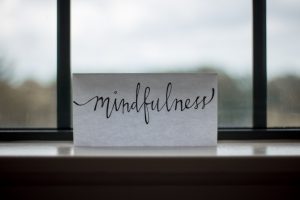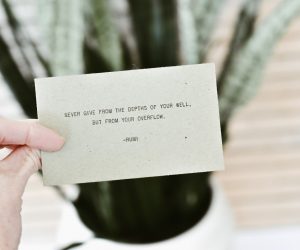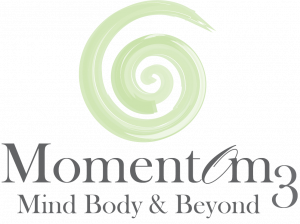Press P.A.U.S.E to Stress Less Now!
Stressed Out?
When was the last time you were stressed out? You know…heart pounding, muscles tensing, emotions and thoughts swirling out of control? Maybe you even said or did something that you later realized wasn’t how you would have liked to have responded. Has this ever happened to you?
If you answered “yes”, then you are human. Stress is a fact of life. It is how we respond when our needs are not met. Stress is universal because our needs are universal.
I have heard that human beings experience this phenomenon –needs not being met—8 to 15 times per day! Whoa…let me repeat that—8 to 15 times per DAY.
Good News/Bad News
I have good news and bad news. First the good news–stress is a fact of life and it is here to stay. And now for the bad news—stress is a fact of life and it is here to stay.
Wait, what?
Let me explain. First, the good news is that stress protects us. You may have heard of the Fight-or-Flight response. This primitive physiological response is hardwired and automatic. Its main job is to protect you from immediate physical danger. The classic fight-or-flight example is the saber- toothed tiger chasing a caveman! There is also “good” stress. You know, playing sports, learning a new hobby, ziplining, working toward the completion of a project, pursuing a lifelong dream.
Now for the bad news. Unfortunately, the same hardwired stress response can get switched on when there isn’t an immediate physical threat. Modern-day stressors such as a boring or unfulfilling job, credit card debt, dealing with a difficult co-worker or family member, or juggling competing priorities can all trigger this same fight-or-flight reaction
That’s not all…
When your body gets stuck in this perpetual stress response it leads to chronic issues. It is estimated that 75 to 90 percent of all doctor’s visits are for stress-related symptoms and disease. I would rather be in the other 10 to 15 percent.
How about you?
What if I could show you a simple technique to short-circuit your stress response–in the moment? Would you be interested?
Viktor Frankl, Austrian neurologist and psychiatrist as well as a Holocaust survivor, said “Between Stimulus and response there is a space. In the space is our power to choose our response. In our response lies our growth and our freedom”
Keep reading to find out how to access this space–the pause!
Press P.A.U.S.E
Can you think of something or someone that “triggers” you? A situation that you know most certainly will cause you to feel stressed? Now, I want you to keep that trigger in mind while I walk you through a method that will allow you to stress less and respond in a different—let’s say—better way!
It’s a little acronym I came up with to help in the moment—it’s P.A.U.S.E.
P – Present Moment

Photo by Simon Migaj on Unsplash
The first step to halting the hardwired, programmed response to stress is to get present. Getting present means fully bringing your attention into the present moment. There are a number of ways that immediately bring you into the present moment. Here are a few:
- Get grounded-this may be noticing your feet on the floor or noticing your bottom on your chair or as I have heard it termed “where’s my butt?”
- Breathe-bring attention to your breath. Notice your breath—the inhale, the exhale. Did you know that your breath is a superpower? Using your diaphragm (belly breathing) and extending your exhale sends a message to your brain to calm down. Just breathe…
- Come to your senses-you can bring attention to each of your 5 senses. What do you see, what do you hear, what do you feel (touch), what do you smell and what do you taste?
A – Awareness

Photo by Lesly Juarez on Unsplash
In the present moment, you notice and become aware of what is happening in your mind and body—your thoughts, feelings, sensations. Observe what is going on objectively—without judgement. Just notice. From this place you have the space—the power to choose—your response.
U – Unique Self-Regulation Tools

Photo by Plush Design Studio on Unsplash
Self-regulation is your own unique way of regulating your mind and body. Self-regulation tools might include your ability to reduce or stop the stress response using calming techniques such as breath work, physical movement, or visualizing a peaceful scene.
Self-regulation is also the ability to control your mind and behaviors. You typically do this daily by deciding when you need to sleep, when you need to eat, when you need to take a walk or listen to music.
What might you need right now? Need to shift your weight in your chair? Stretch your neck? Take a drink of water? How about take in a deep breath to re-energize you? These are things you may easily overlook or take for granted, but if you pay attention can make a big difference in reducing your stress.
S – Smile

Photo by Sewn Apart on Unsplash
I am sure you have heard the phrase “turn that frown upside down”-
research has proven that smiling can boost your mood. Psychologists have found that even if you are in a bad mood, you can lift your spirits by smiling.
When you’re stressed, immediately shift your attention. Think of something that always brings a smile to your face. When you smile, here are just a few things it will do:
- Release endorphins to help relieve your stress
- Boost your immune system to help your body fight off the “bad guys”
- Connect with others since it is a universal sign of happiness
- Share the love since smiles are contagious
Your turn! Think of something that brings a smile to your face. Go ahead bring on your biggest, “say cheese grin”. Try it now! It works!
E – Embrace

Photo by Allie Smith on Unsplash
Embrace self-compassion and be kind to yourself. When you are stressed and in fight-or-flight mode, your brain is not thinking straight—not thinking at all matter of fact. Remember, this automatic reaction is…well, just that. Automatic. You may have a sense of urgency to do more and to be more. It is easy to go into overdrive and be hard on ourselves. Have you ever stressed yourself out?
According to Christopher Germer (2009), self-compassion in the moment asks the question “What is it that you need?” This may be acknowledging your unmet needs—like rest, quiet, space, comfort, food, movement, or perhaps social engagement.
When you are stressed out, what can you do to treat yourself kindly?
So, what do you think? The next time you are stressed, give yourself permission to press PAUSE. You deserve to stress less and to live more fully. Now!

